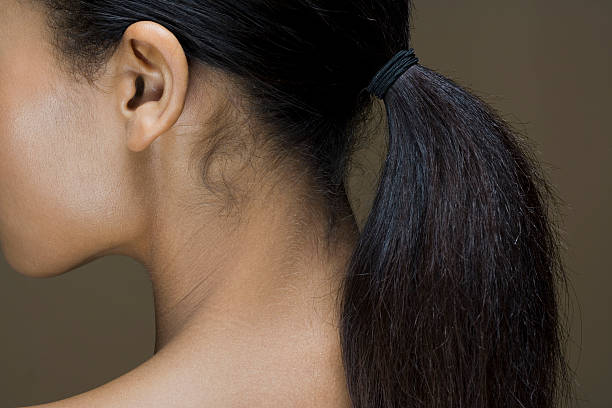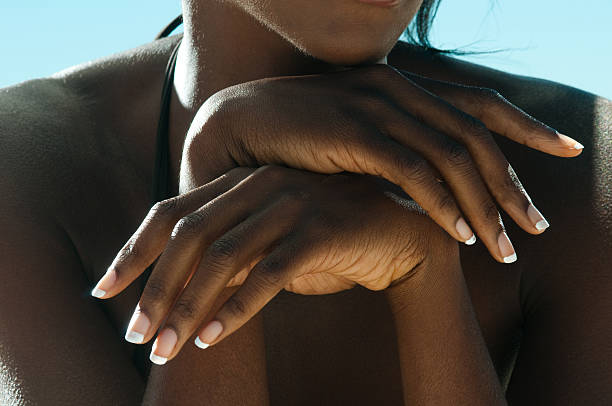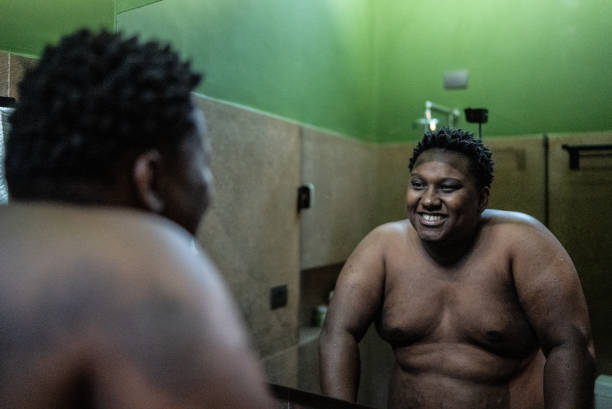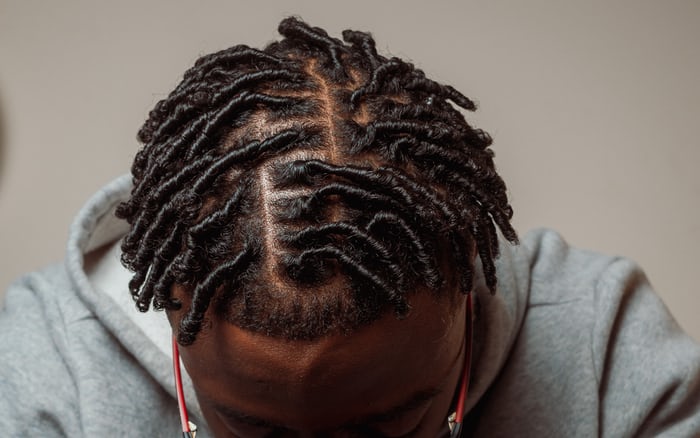Understanding the hair growth cycle is essential to grasping how hair grows and why red light therapy for hair growth works.
According to the American Hair Loss Association, up to 67% of men will have some degree of hair loss, or alopecia, by the age of 35. That figure would have grown to 85% by the age of 50. Despite garnering significantly less attention, women’s hair loss is surprisingly widespread, accounting for 40% of all hair loss cases.
Hair loss is sometimes dismissed as a natural part of life and an unavoidable side effect of aging, both by society as a whole and by the medical system in particular. This is somewhat correct; nevertheless, this widely believed assumption misses the fact that hair loss can have devastating psychological consequences.
It is estimated that nearly 10% of cancer patients will refuse chemotherapy if hair loss is a possibility, this shows the huge ramification hair loss can have on a person’s body image and self-confidence.
There is, however, some good news. According to encouraging new research, red light therapy is a safe and effective treatment for hair loss.
Let’s look at how we grow hair and why so many people end up losing it before we delve into the mechanics of red light therapy hair growth results.
Understanding the Hair Growth Cycle
The cycle consists of four main phases:
The hair follicle’s active growth period, known as the anagen phase, typically lasts between two and seven years. Red light therapy is important during this cycle of hair growth, as hair follicles are actively growing.
In this period, red light therapy enhances blood circulation by activating cellular activity and also blood circulation in the scalp, which can intensify the delivery of nutrients to the hair follicles. This stimulation can prolong the anagen phase and promote hair growth.
The catagen phase is a transitory stage that lasts only a short while, typically a few weeks. During this stage, the hair follicle shrinks, and hair growth stops. Hair separates from the blood supply and moves upwards towards the surface of the scalp.
The telogen phase, which can last from several weeks to a few months, is the resting phase.
The exogen phase, which is the molting or shedding phase, refers to the natural molting of old hair strands during the telogen phase. Shedding prepares the way for new hair development and is an intrinsic part of the hair growth cycle.
The hair follicle will then once again enter the anagen phase, and the cycle begins again.
As each follicle acts independently, hair strands on different areas of the scalp may be at different stages of the cycle at the same moment. Low-level red or near-infrared light wavelengths are emitted during red light therapy, and these wavelengths pass through the scalp and are absorbed by the cells in the hair follicles. The energy source for cells, adenosine triphosphate (ATP), can be stimulated by these light wavelengths. ATP aids in cellular function improvement and can speed up hair follicle cell metabolism, which promotes hair growth.
When the hair development cycle is disturbed, it might result in shorter anagen phases, longer telogen phases, or lower hair density.
How Red Light Therapy Promotes Hair Growth
Red light therapy promotes hair growth through a process known as photobiomodulation, which involves the absorption of red and near-infrared light by cells in the body. When the red light is absorbed by cells in the scalp, it penetrates deep into the tissue and stimulates cellular activity, promoting the production of ATP and other cellular components necessary for hair growth.
Here are a few ways in which red light therapy promotes hair growth:
- Increasing blood flow to the scalp: In addition to increasing blood flow to the scalp, red light therapy also stimulates the growth of new hair by providing nutrients and oxygen to the hair follicles. A systematic review published in the Journal of Dermatological Treatment in 2017 analyzed several studies on red light therapy for hair growth. The review concluded that red light therapy can enhance blood flow to the scalp, which can promote hair growth.
- Stimulation of hair follicles: Red light therapy has been shown to stimulate hair follicles, promoting the growth of new hair and strengthening existing hair.
- Production of ATP: Red light therapy promotes the production of ATP, which is essential for cellular function and repair. This increased production of ATP can help stimulate hair growth. A 2021 study published in the Annals of Dermatology summarised the findings of several investigations on red light therapy and ATP generation. The study concluded that red light treatment can boost ATP generation in a variety of cell types.
- Reduction of inflammation: Red light therapy has anti-inflammatory effects, which can help reduce inflammation in the scalp that may be contributing to hair loss, as the above study published in the Annals of Dermatology showed.
Overall, red light therapy helps to promote healthy hair growth by improving the health of the scalp and hair follicles, stimulating cellular activity, and increasing blood flow to the scalp.
Evidence Supporting Red Light Therapy for Hair Growth
Several studies have shown that red light therapy can be an effective treatment for hair loss and promote hair growth. Here are a few examples of scientific evidence supporting red light therapy for hair growth:
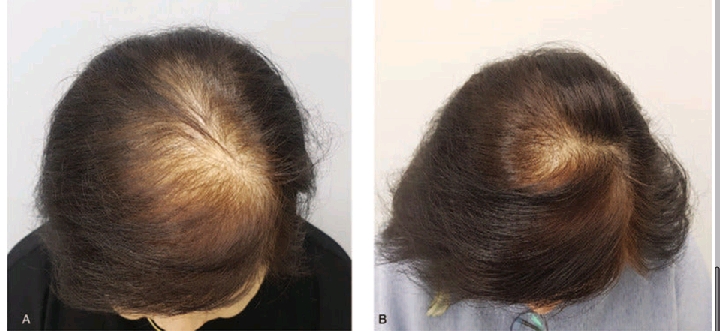
Before After
- A randomized controlled trial published in the Journal of Cosmetic and Laser Therapy in 2014 found that red light therapy significantly improved hair density and thickness in both men and women with androgenetic alopecia (pattern baldness). The study involved 128 participants who were treated with red light therapy for 26 weeks. The researchers found that hair density increased by 17.6% in the treatment group, compared to only 2.3% in the placebo group.
- Another study published in the International Journal of Trichology in 2023 found that red light therapy significantly improved hair count and hair thickness in men with androgenetic alopecia. The study involved 54 patients who were treated with red light therapy for 16 weeks. The researchers found that the hair count increased by 35 hairs per cm² in the treatment group, compared to only 3 hairs per cm² in the control group.
- A randomized, double-blind, placebo-controlled study published in the journal Lasers in Surgery and Medicine evaluated the effects of red light therapy on androgenetic alopecia (male pattern baldness). The study found that participants who received red light therapy experienced a significantly greater increase in hair density and count compared to those who received a placebo treatment.
- Yet another study published in the Journal of Clinical and Aesthetic Dermatology examined the effects of red light therapy on both men and women with androgenetic alopecia. The results showed a significant improvement in hair density and thickness in the group that received red light therapy compared to the control group.
- A study published in the International Journal of Trichology investigated the effects of red light therapy on women with female-pattern hair loss. The findings demonstrated that red light therapy led to a significant increase in hair density and diameter, suggesting its potential as a non-invasive treatment option for female-pattern hair loss.
Hundreds more studies have been conducted to demonstrate the efficacy of red light therapy, particularly in the treatment of AGA. The current results are encouraging, although additional research is required. Red light treatment for hair growth has nothing to lose and a lot to gain.
Red Light Therapy vs. Traditional Hair Loss Treatments
When comparing red light therapy to other hair loss therapies, it’s critical to analyze the unique qualities, methods of action, and studies backing each strategy. Here are some comparisons with commonly used hair loss treatments:
- Medications: While medications can be effective for some individuals, they may have side effects or require long-term use. Red light therapy for hair growth offers a non-pharmacological alternative with minimal known side effects.
- Hair transplant surgery: Hair transplant surgery involves moving hair follicles from one part of the scalp (typically the back or sides) to areas of the head where hair loss is present. It is a surgical treatment that can restore hair permanently. Non-invasive red light therapy, on the other hand, can be used as a supplemental treatment to enhance the health and proliferation of existing hair follicles, potentially boosting the overall success and longevity of hair transplant outcomes.
- Laser therapy: Low-level laser systems that generate certain wavelengths of light to stimulate hair growth are commonly used in laser therapy for hair loss. Red light therapy is a type of laser therapy that uses wavelengths of red light. While the specific devices and parameters may differ, the goal of both red light treatments and other laser therapies is to stimulate hair follicles and encourage hair growth. Both approaches have demonstrated positive results in studies, although the specific devices and protocols employed may alter the findings.
- Topical treatments: For hair loss, various topical treatments, such as serums or foams containing substances such as minoxidil or natural extracts, are often utilized. These treatments are usually used on the scalp. Because they may have complementary modes of action, red light therapy can be used in conjunction with topical therapies. Red light treatment can improve the absorption and efficacy of topical drugs.
Conclusion
It’s important to note that individual responses to different treatments can vary, and there is no one-size-fits-all solution for hair loss. Combination approaches, such as using red light therapy in conjunction with other treatments, may yield the best results for some individuals.
An at-home red light therapy for hair growth device allows you to commit to a continuous program of red light therapy to promote healthy hair growth.
Reference
1. Use of low-level laser therapy in the treatment of androgenic alopecia, the first systematic review. Ibrahim Najem 1, Hongxiang Chen 1 PMID: 29227728 DOI: 10.1080/14764172.2017.1400174
2. Low-level laser therapy for the treatment of androgenic alopecia: a review Evan Darwin 1, Alexandra Heyes 2, Penelope A Hirt 2, Tongyu Cao Wikramanayake 2, PMID: 29270707
3. Energy-based Devices for Hair Loss Author links open overlay panel James T. Pathoulas BA a, Gretchen Bellefeuille BS a, Ora Raymond BA a, Bisma Khalid MBBS, FCPS b, Ronda S. Farah MD a https://www.sciencedirect.com/science/article/abs/pii/S073386352100022X
4. Treatment of androgenetic alopecia with 5-aminolevulinic acid photodynamic therapy: A randomized, placebo-controlled, split-scalp study of efficacy and safety https://www.sciencedirect.com/science/article/abs/pii/S157210002100315X
5. Role ofA Low-Level Light Therapy (LLLT) in Androgenetic Alopecia Jisha K Pillai 1, Venkataram Mysore 1 PMCID: PMC8906269 https://pubmed.ncbi.nlm.nih.gov/35283601/
Collins Nwokolo is a human physiologist, writer and health enthusiast. He loves writing helpful articles on health and fitness, which he enjoys sharing with everyone.






